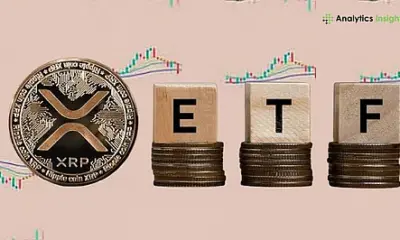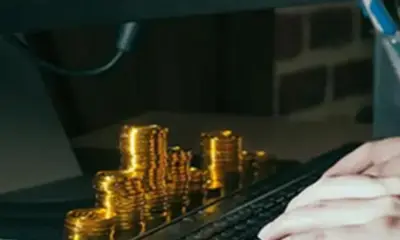Technology
Bitcoin Mining Explained: How It Works and Its Economic Impact

Bitcoin mining is a crucial process that underpins the cryptocurrency’s network, enabling transactions to be verified and new bitcoins to be introduced into circulation. This dual role not only secures the Bitcoin network against fraud but also facilitates the decentralized nature of the digital currency, which operates independently of central banks and corporations.
Understanding Bitcoin Mining
Miners utilize powerful computers to solve complex mathematical equations that are integral to Bitcoin’s proof-of-work system. When a miner successfully solves one of these puzzles, they create a ‘block’ that contains a list of new transactions. This block is then added to the public ledger known as the blockchain, making the transactions permanent and immutable. As a reward for their efforts, miners receive newly issued bitcoins and transaction fees.
The system was launched in 2009, with miners initially earning 50 bitcoins per block. This reward is halved approximately every four years, a process known as Bitcoin halving. Most recently, in April 2024, the reward was reduced from 6.25 bitcoins to 3.125 bitcoins per block. This halving mechanism is built into Bitcoin’s code to control inflation, ensuring that only 21 million bitcoins will ever be mined.
With increasing competition in the mining sector, miners have progressed from using standard desktop computers to specialized hardware called ASICs (Application-Specific Integrated Circuits). These devices are designed specifically for mining, providing greater efficiency but at a higher cost and with increased energy requirements.
The Energy Challenge and Mining Pools
Bitcoin mining is energy-intensive, with mining rigs needing to run continuously to remain competitive. This has raised concerns about the environmental impact of Bitcoin mining. While some operations utilize renewable energy sources, such as hydroelectric or solar power, others are drawn to locations with cheaper electricity, which can lead to significant carbon footprints.
The difficulty of mining adjusts approximately every two weeks, reflecting the number of miners in the network. When more miners join, the difficulty increases, ensuring that blocks are found at a consistent rate of about 10 minutes per block. Given the current landscape, individual miners rarely operate alone. Instead, many join mining pools where they combine processing power and share rewards proportionally. This method enhances the likelihood of consistent payouts but introduces a degree of centralization to the network.
As the rewards for mining decrease, miners will increasingly depend on transaction fees for revenue. This shift could lead to significant changes within the mining ecosystem, particularly as hardware efficiencies improve and regulations evolve.
Bitcoin mining remains a pivotal aspect of the cryptocurrency’s architecture. It prevents double-spending, ensures transaction integrity, and incentivizes stakeholders to maintain the network. Without miners, Bitcoin’s decentralized and trustless system would be vulnerable to attacks.
The future of Bitcoin mining will likely be shaped by ongoing advancements in technology, regulatory changes, and market dynamics. As miners adapt to the shrinking rewards, the economic landscape surrounding Bitcoin is set to evolve, making it a topic of interest for investors and enthusiasts alike.
As the industry continues to mature, discussions around the legitimacy and sustainability of Bitcoin mining will remain prominent, with varying opinions on its environmental impact versus its role in financial decentralization.
-

 Technology5 months ago
Technology5 months agoDiscover the Top 10 Calorie Counting Apps of 2025
-

 Technology3 weeks ago
Technology3 weeks agoOpenAI to Implement Age Verification for ChatGPT by December 2025
-

 Health3 months ago
Health3 months agoBella Hadid Shares Health Update After Treatment for Lyme Disease
-

 Health3 months ago
Health3 months agoAnalysts Project Stronger Growth for Apple’s iPhone 17 Lineup
-

 Health4 months ago
Health4 months agoErin Bates Shares Recovery Update Following Sepsis Complications
-

 Technology5 months ago
Technology5 months agoDiscover How to Reverse Image Search Using ChatGPT Effortlessly
-

 Technology3 months ago
Technology3 months agoElectric Moto Influencer Surronster Arrested in Tijuana
-

 Technology5 months ago
Technology5 months agoMeta Initiates $60B AI Data Center Expansion, Starting in Ohio
-

 Technology2 months ago
Technology2 months agoDiscover 2025’s Top GPUs for Exceptional 4K Gaming Performance
-

 Technology5 months ago
Technology5 months agoRecovering a Suspended TikTok Account: A Step-by-Step Guide
-

 Health5 months ago
Health5 months agoTested: Rab Firewall Mountain Jacket Survives Harsh Conditions
-

 Lifestyle5 months ago
Lifestyle5 months agoBelton Family Reunites After Daughter Survives Hill Country Floods





















